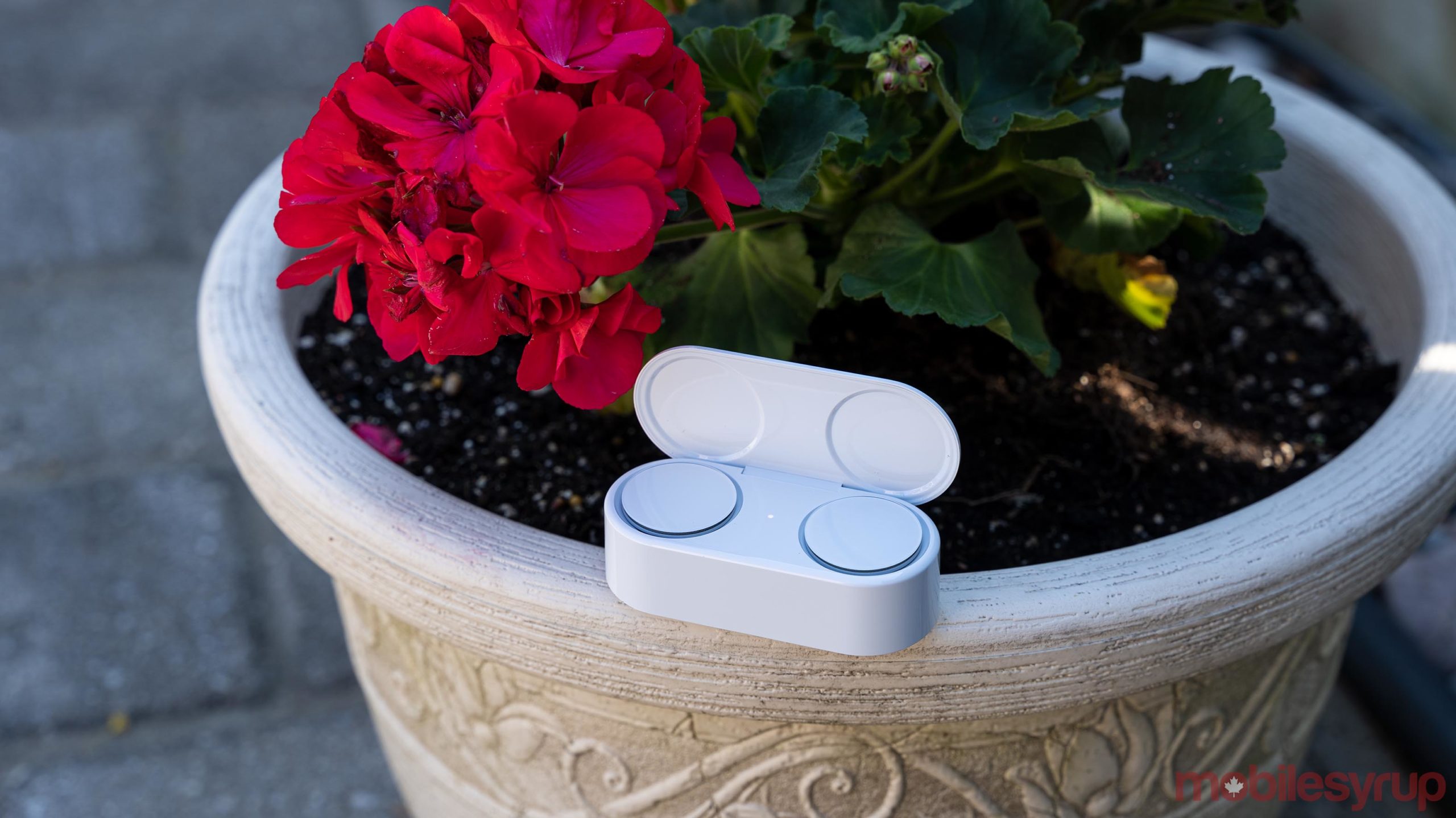
The Pros
- Comfortable
- Unique look
- Battery life
The Cons
- No noise-cancellation
- Case doesn't have wireless charging
- Expensive compared to competition
I’ve been waiting for Microsoft’s Surface Earbuds since the Redmond, Washington-based company first announced them back at the Surface event in October 2019. I had the opportunity to try out the Earbuds on the showroom floor at the event. At the time, they impressed me. However, things have changed since 2019.
Thankfully, the Surface Earbuds still hold up in many ways. For example, at the event I was told the buds would retail for $249 USD, which would have put them close to $330 CAD. It’s a steep ask, especially since they don’t offer noise-cancellation — the most glaring omission with the Earbuds.
Months later and the Surface Earbuds are now officially on sale in Canada for a much better $259, $10 cheaper than Apple’s AirPods with Wireless Charging Case and much cheaper than the $329 AirPods Pro. But that also makes the Surface Earbuds $60 more than Samsung’s excellent Galaxy Buds+, which offer noise-cancellation.
So, the question becomes whether the Surface Earbuds can justify the price even without core features like noise-cancellation.
Unmistakeable

For better or for worse, the Surface Earbuds are probably the most unmistakable earbuds on the market save for Apple’s AirPods. When you glance at someone, if you see those iconic white stems sticking out of someone’s ears, you know they’re rocking AirPods.
The Surface Earbuds, however, don’t have stems. Instead, someone wearing the Earbuds looks like they have a white disk floating beside their ear. It almost looks like a spacer.
I think the Earbuds look great. The disc shape is futuristic and, as a side benefit, the large, flat surface leaves lots of space for touch gestures.
On the other hand, I can understand why people might not like the look. Considering Microsoft is all about business and enterprise, I can see the aesthetic being an issue for some given other true wireless earbuds feature a more subtle look.
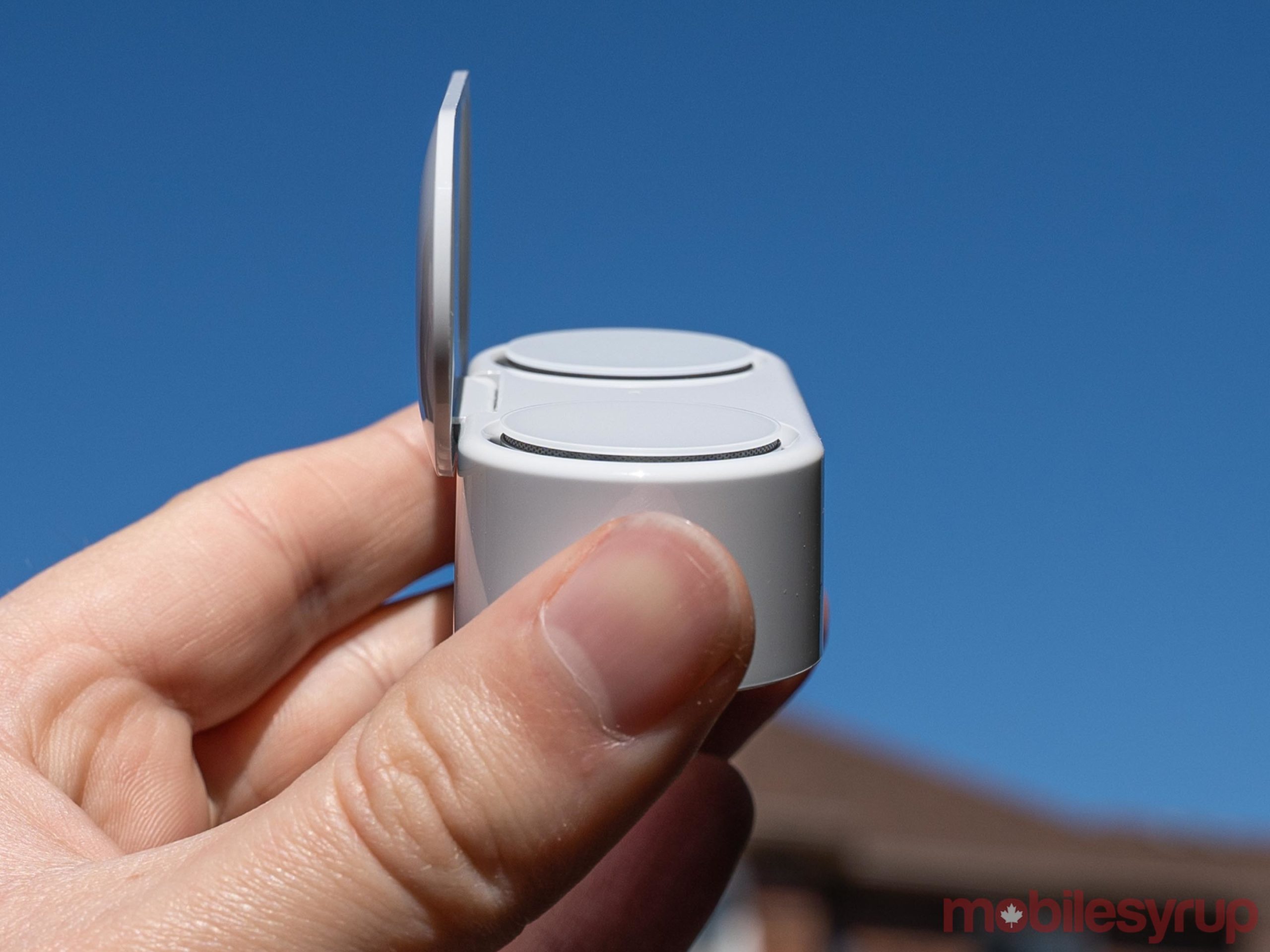
Ultimately, the aesthetics of the Earbuds come down to personal preference. I love the look, but some out there may not.
The few legitimate gripes I can leverage against the design is that the flat disc of the Earbuds sit almost flush against the top of the charging case. This can make it tricky to pull the Earbuds out at times.
The other issue I’ve noticed is the buds and case scratch up quite easily. In just the short few days I’ve been using them, both the case and the buds are covered in tiny scratches. It’s not a huge issue, but disappointing to see.
Just the tips
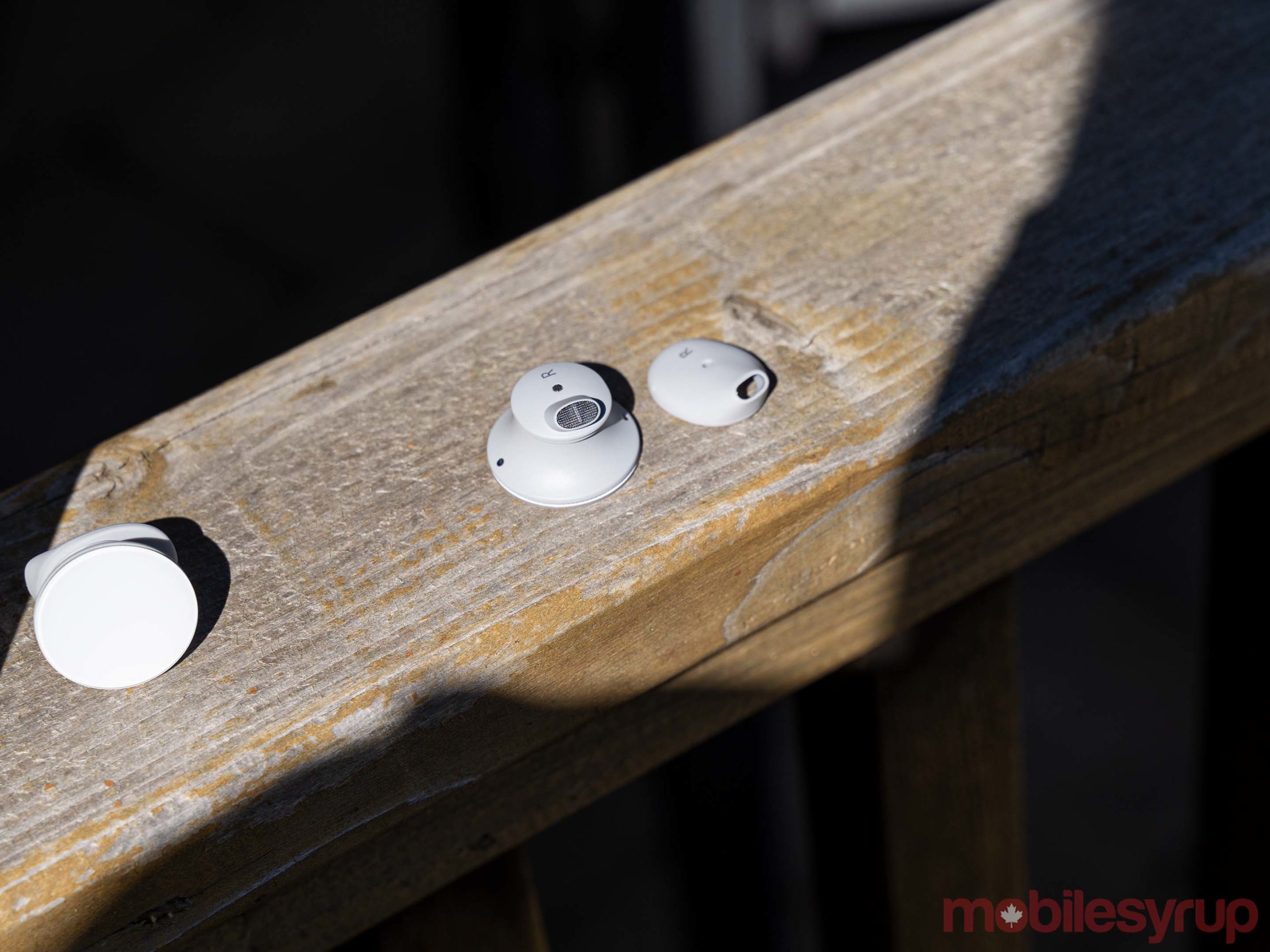
The design of the Earbuds affects more than just their appearance. The in-ear experience also relies heavily on the design and, in this case, I think Microsoft delivers.
Unlike most earbuds, the Surface Earbuds don’t push into your ear. They feel almost like a half-step between over-the-ear headphones and in-ear buds.
Instead of a bulbous rubber tip that you jam into your ear canal, the Surface Earbuds have a sloped rubber tip. It’s more oval in shape. When you put it in your ear, the tip with the earpiece goes in first, and then you twist the earbud down so the rubber tucks in behind the ridge of your ear — officially called the ‘antitragus’ if you want to get technical. The Earbuds seem to lock into your ear this way.
The result is that the Surface Earbuds are some of the most comfortable true wireless earbuds I’ve ever worn. Combined with their lightness, the Surface Earbuds don’t put any undue pressure on my ears, they don’t feel like their burrowing into my ear canal and I can wear them for hours.
A major part of the Earbuds design is that you need to try the tips Microsoft includes. You really need to spend some time with the tip sizes and see how they feel in your ear. For me, the medium tip fits perfectly in my left ear. The bud doesn’t feel loose and I can seemingly wear it for hours without issue.
I found I had more issues with the right bud. The smallest tip seems to have the snuggest fit, but can get sore over time. Medium and large felt loose, although I couldn’t get them to fall out of my ear no matter how hard I tried. Regardless, I can still wear the Surface Earbuds for longer than other buds, which is a plus in my book, even if the tips don’t seem to fit my right ear.
Music for hours
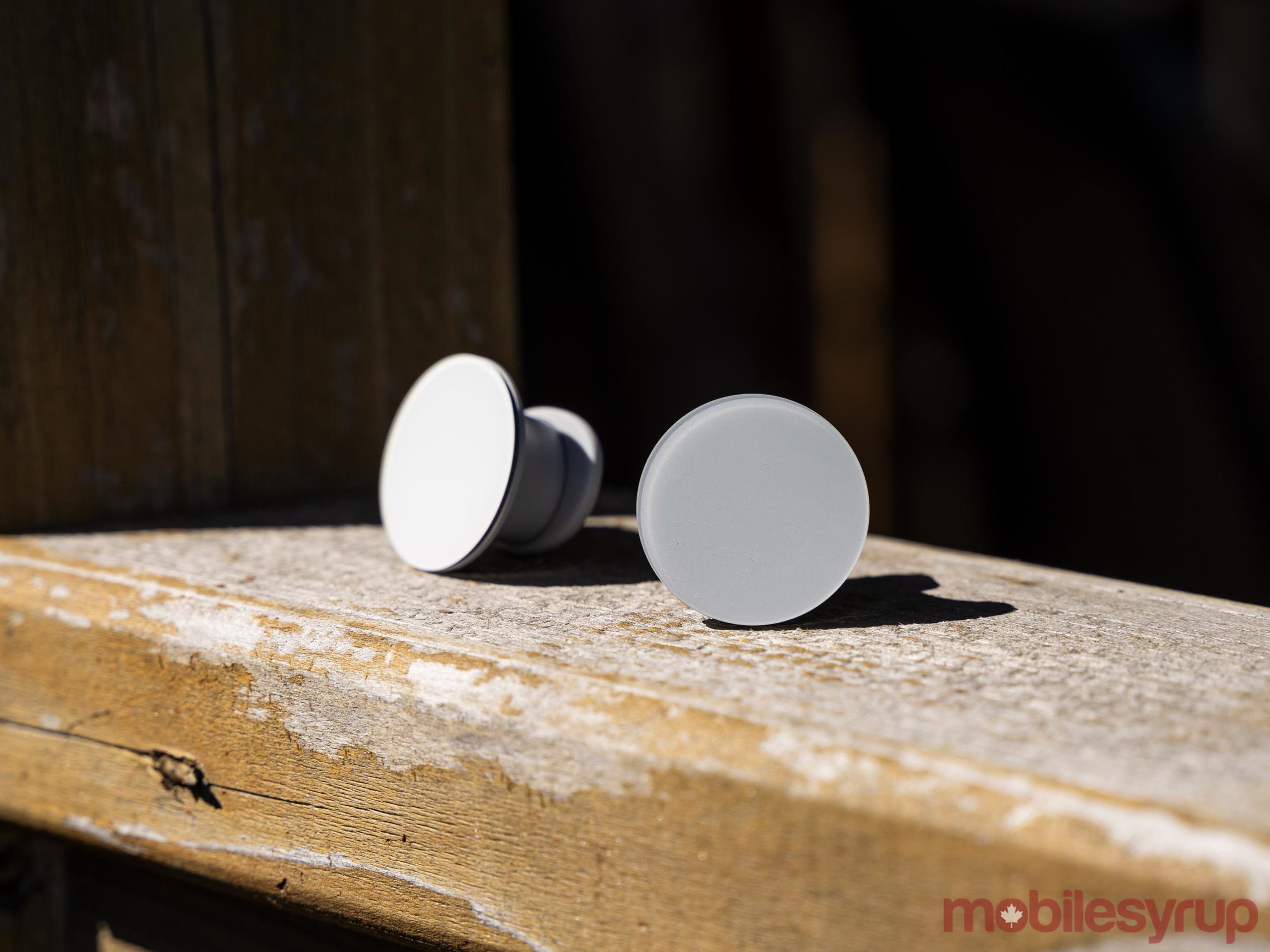
I love that I can comfortably wear the Earbuds for long periods of time since they offer excellent battery life. Microsoft boasts an eight-hour battery life and while I wasn’t able to hit that in my testing, the Earbuds did last longer than other wireless earbuds I’ve tested.
I often clocked in at about five-and-a-half to six hours of listening to Spotify, which was more than enough for me. I suspect the battery would have lasted longer, but the right Earbud died long before the left, which was around 50 percent charge when I put them back in the charging case.
Microsoft confirmed to me this is because the right Surface Earbud is always the ‘master earbuds’ in the connection. Most true wireless earbuds operate in a similar way, with one of the pair acting as the ‘master’ and handling the connection to the phone as well as to the second earbud.
As such, the right Surface Earbud does the heavy lifting and drains quicker. Most true wireless earbuds work like this, but many use software to switch between the master earbud so that the battery drains more equally from both sides.
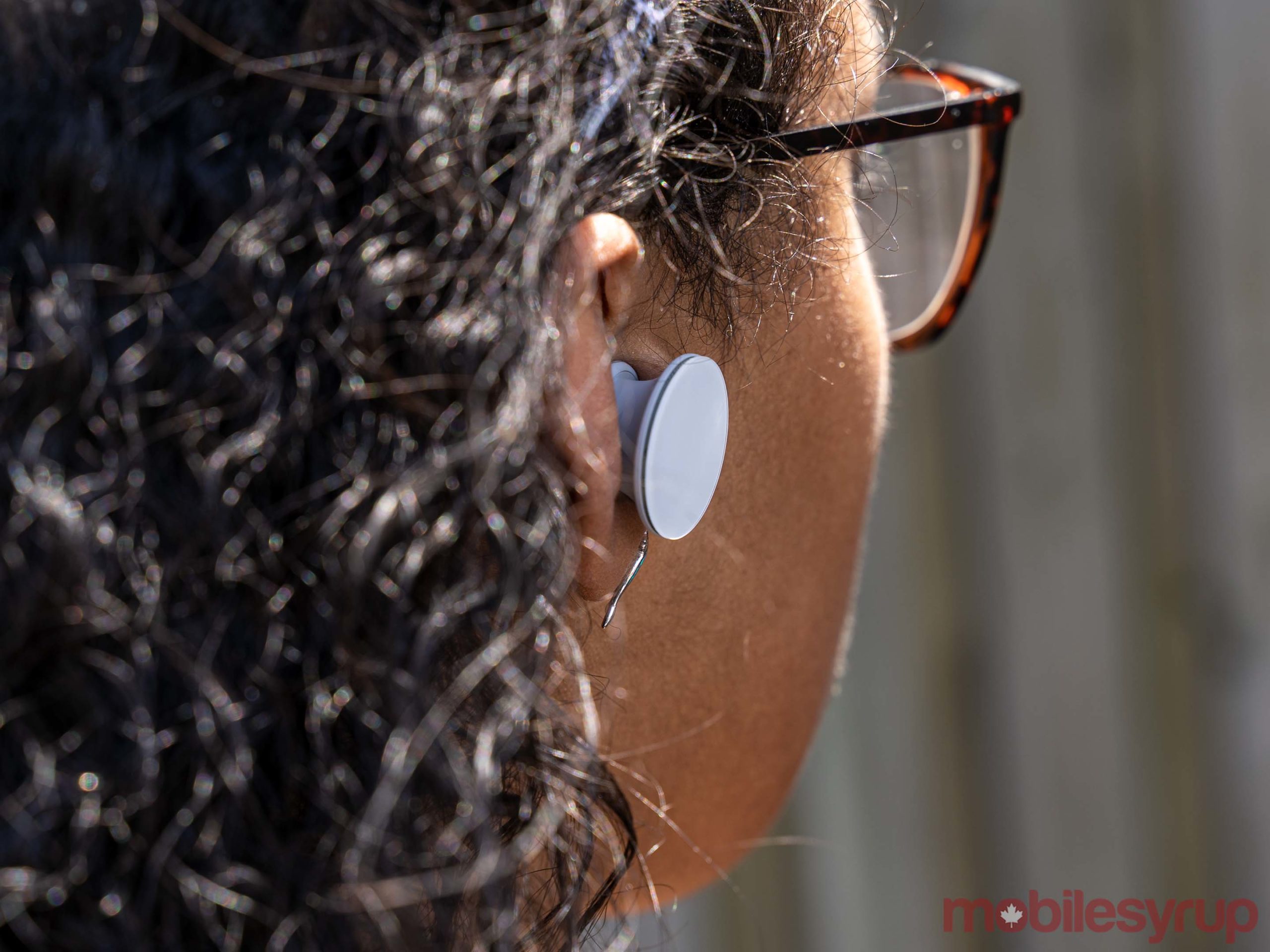
Microsoft indicated to me that the Surface Earbuds always default to the right earbud as the master in a connection. Unfortunately, that means no switching to balance power consumption. That said, the company’s support documents for the Surface Earbuds suggest if one bud dies before the other, you can put it in the case and continue using the other.
Ultimately, I feel like the buds could last much longer with better management of power consumption between the pair. Hopefully Microsoft can tweak this behaviour in a future update.
The battery case can top up the buds fairly quickly. Unfortunately, it doesn’t support wireless charging, despite what I was told by Microsoft last year. It does feature a USB-C port, so you can charge the case with the same cable as your smartphone (plus, it comes with a USB-C to USB-A cable, which is awesome).
Touch controls are handy
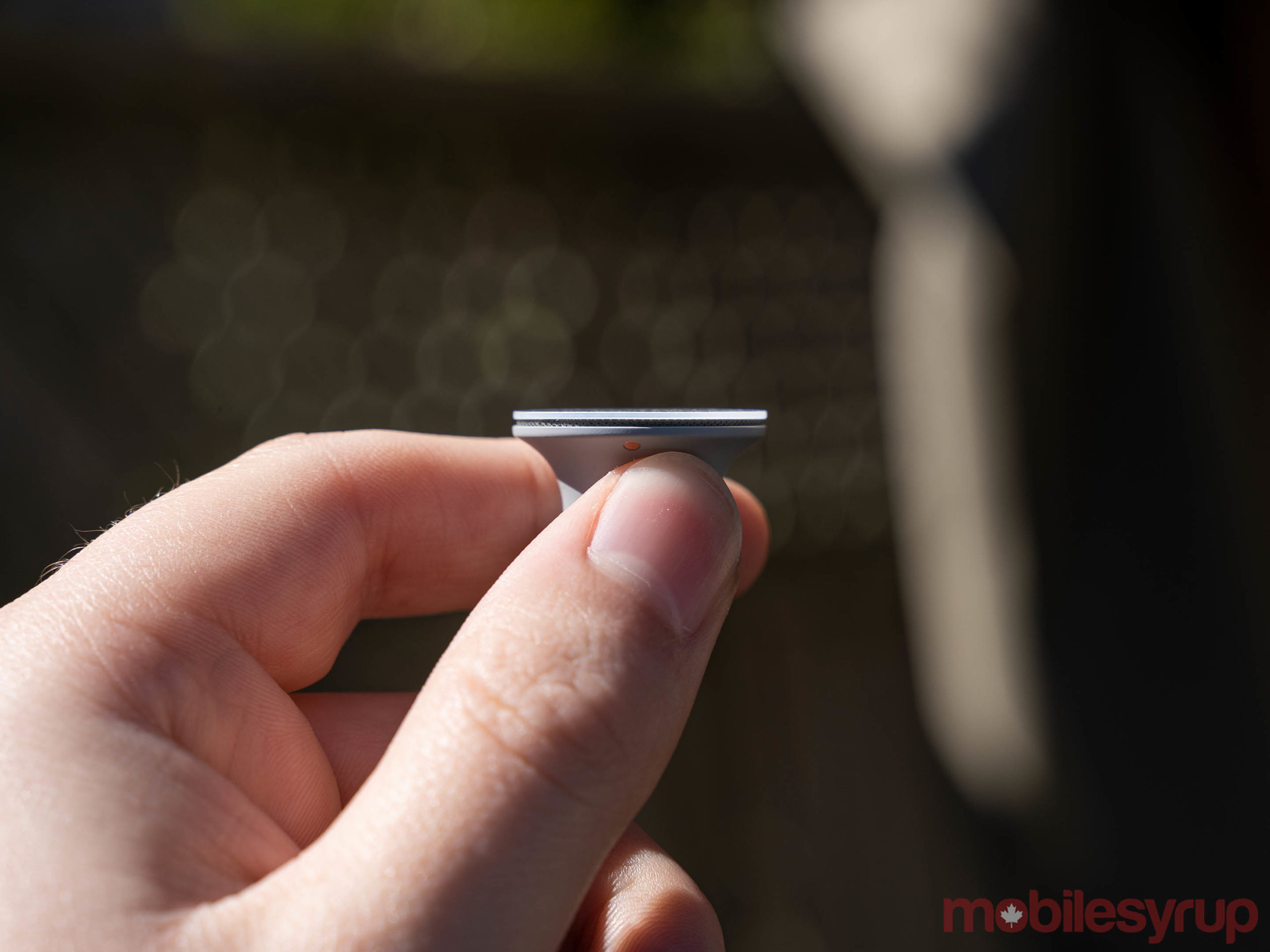
One issue I noted when I went hands-on with the Earbuds last year was that the touch controls seemed to have some reliability issues. Those issues, thankfully, are mostly non-existent on the final version of the Surface Earbuds.
Users can double-tap on either bud to play or pause music. Double tapping will also answer or hang up a phone call. These worked consistently well and I found myself reaching for my phone less to pause my music.
Additionally, you can swipe up or down on the right bud to adjust the volume. In practice, I found this took a bit of getting used to as the directionality can be temperamental. It worked well once I got the hang of it. Likewise, swiping forward or backward on the left bud will skip to the next song or go back to the previous one.
Users can also access their digital assistant of choice by touching and holding on either bud. I found this worked much better on Android with the Google Assistant than with Siri on iOS. For one, Siri would only launch when the iPhone was unlocked. On top of that, the playback volume for Siri’s voice was ridiculously loud compared to, say, the music I was listening to before. iOS also seems to be buggy with how it handles the Siri activation. If I activated Siri while the phone was locked and music was playing, it would mute the music (but the song kept playing). Further, Siri wouldn’t launch. It also left me unable to un-mute the song unless I unlocked the iPhone, activated Siri again and then hit play.
Activating Google Assistant on a Pixel 4 worked much more smoothly, but the feature feels half-baked. Primarily, Assistant wouldn’t answer some queries without making me unlock the phone, which feels like it defeats the purpose of accessing Assistant hands-free using earbuds. Basic queries like what the weather was like still worked fine, however.
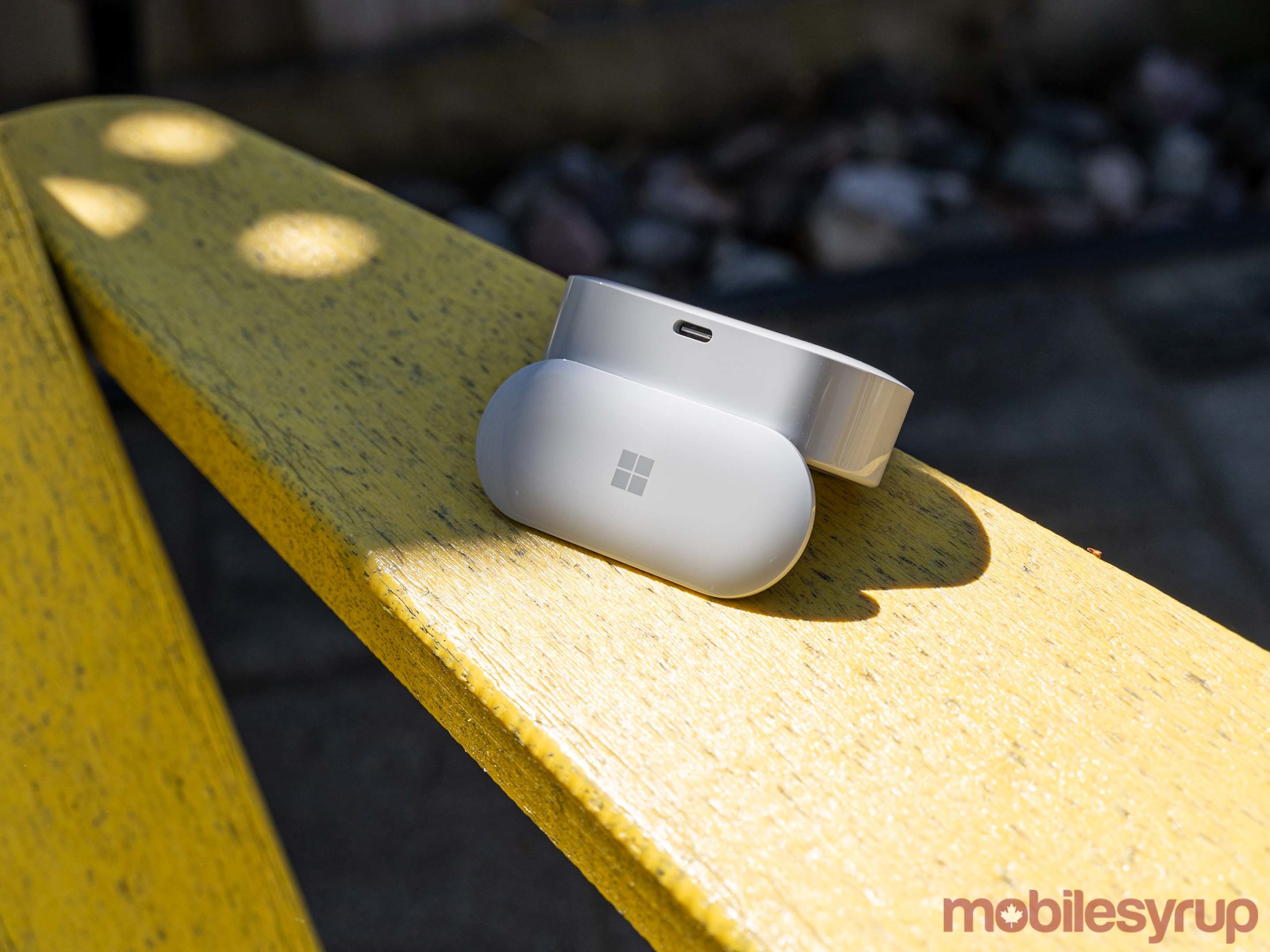
None of those issues are Microsoft’s fault, but it also means fixes are out of Microsoft’s hands. My hope is that Google puts in the leg work to improve the Assistant experience with wireless earbuds since the Pixel Buds are available (although not in Canada yet).
Likewise, Cortana integration worked fine when the buds were connected to a Windows 10 laptop, but I’ve never found Cortana particularly helpful so I didn’t often use it.
Finally, Surface Earbuds let you triple-tap to access Spotify. For now, this only works on Android, but I wasn’t able to get it working at all. When I triple-tap on the earbud, it beeps to let me know it received the command. However, nothing happens. According to Microsoft’s support site, triple-tapping will “play music you like in Spotify.”
While there are certainly a few bugs to work out, for the most part the touch controls were handy and made it easy to control music while wearing the Earbuds.
Solid sound, but not the best
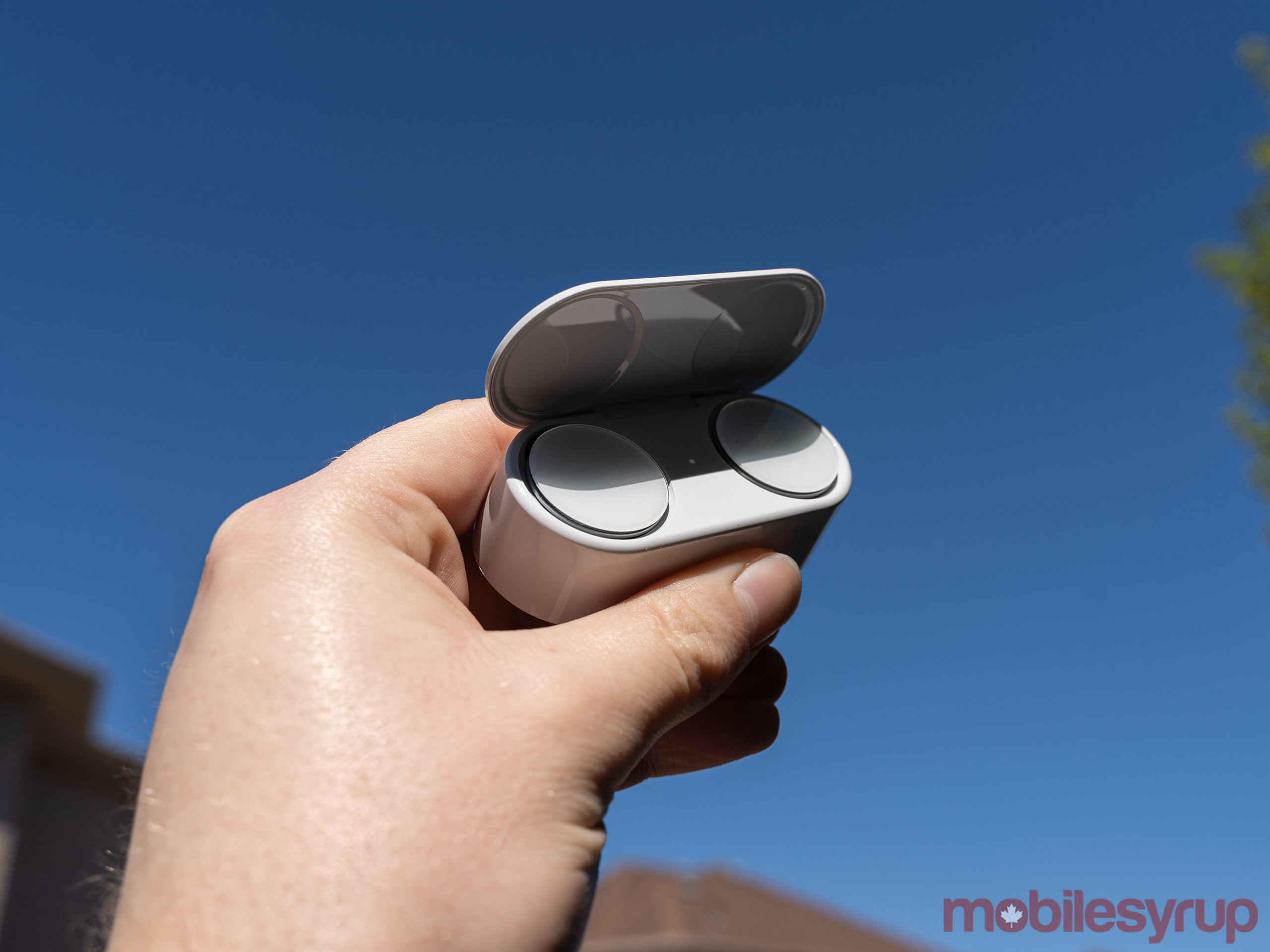
Microsoft’s Surface Earbuds offer solid sound quality, but they’re not the best. In my testing, the Earbuds handled most music I listened to fairly well, whether I was enjoying the smooth tones of Allen Stone or head-banging along to heavy metal.
If I really wanted a great listening experience, I’d make the jump over to the new Surface Headphones 2, which offer better sound quality and noise-cancellation. For that matter, most over-ear headphones will provide better sound thanks to the extra space for bigger drivers.
That said, for the size and weight, I found the Surface Earbuds sounded excellent. I can’t speak to how they compare to the AirPods Pro, unfortunately, since I haven’t tried those personally. My experience mostly involves lower-end wireless earbuds, so perhaps my opinion is skewed.
I will say that I think Microsoft missed the mark on noise-cancellation, but the issue is more complicated than “it’s not here and that sucks.” When I was in New York for the Microsoft event last fall, representatives told me that the Earbuds didn’t include noise-cancellation because the Earbuds were for use “on the go” and because of that, you need to hear what’s around you.
While a reasonable sentiment, it’s also a weak argument considering that other true wireless earbuds with noise-cancellation offer audio pass-through features so you can choose to hear what’s around you when you need to.
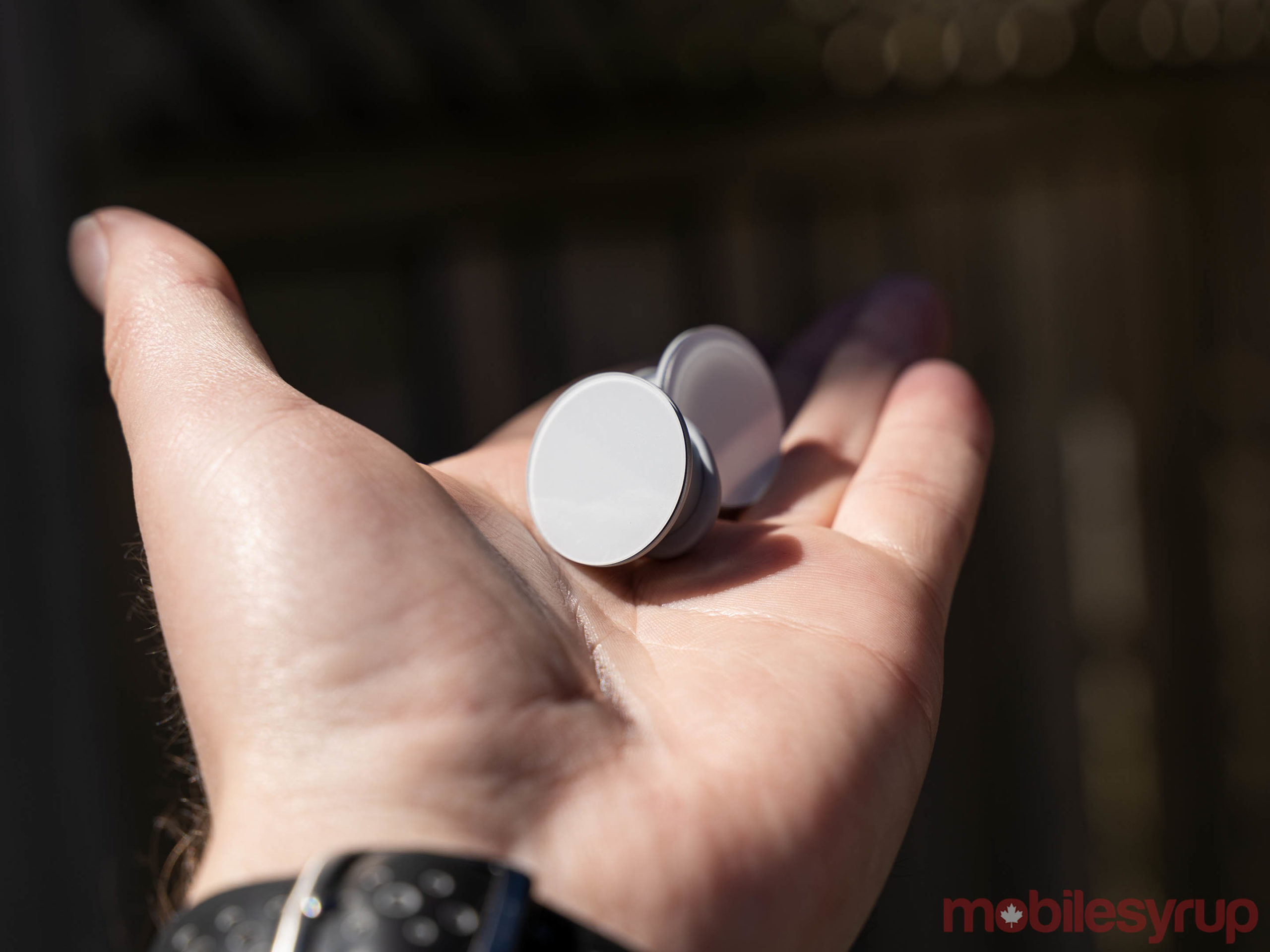
Microsoft’s own Surface Headphones — both the OG model and the new ones — offer audio pass-through, so Microsoft knows how to do it.
But as nice as it would be to have noise-cancellation on the Surface Earbuds, I believe Microsoft would have had to make significant compromises to make it work. Noise-cancellation, at least as it exists on other earbuds, requires some level of seel between the earbud and the ear canal.
In their current form, the Surface Earbuds don’t have a solid seel between the ear canal and the bud. In fact, the Earbuds almost feel disconnected from my ears. In my experience, it doesn’t affect the quality of music significantly, but I imagine noise-cancellation wouldn’t work with the Surface Earbuds with their current shape. With how comfortable the Earbuds are, I’d rather Microsoft keep the current, comfortable shape than change the shape for noise-cancellation and make the experience less comfortable.
Additionally, adding noise-cancelling to the Earbuds would reduce their battery life and probably add a little more weight.
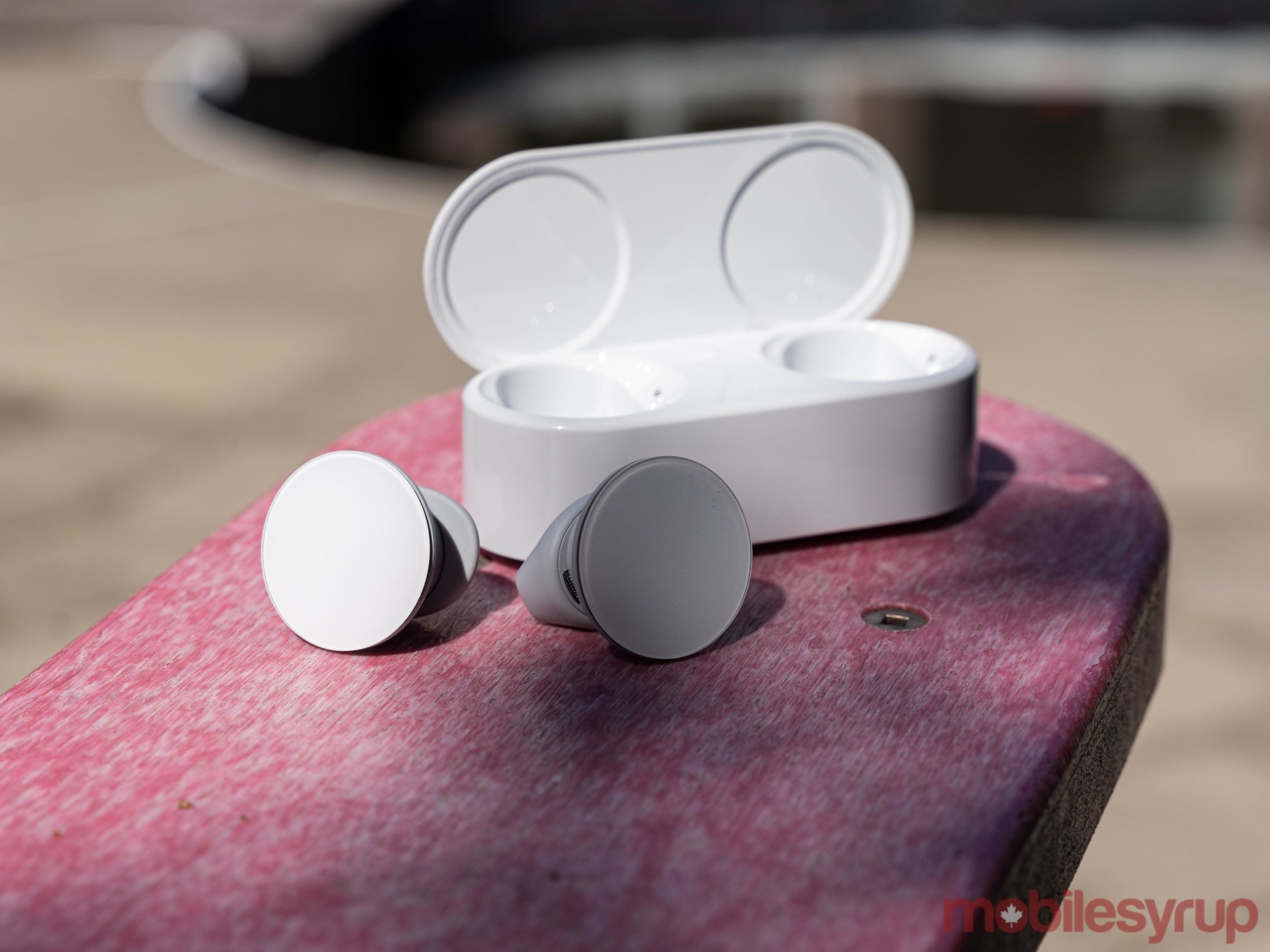
Ultimately, I found that in my use of the Earbuds, one of the best parts about them is that I can just leave them in my ears. It’s really easy to forget that I’ve got them in. To an extent, I believe that’s Microsoft’s goal. I put the Earbuds in, I leave them in. I take phone calls on them, listen to music. A few times I’ve found myself wearing them without doing anything, but they’re in the ear and ready to go if I need them.
To me, that’s the closest any bud has come to what I think is the promise of true wireless earbuds, which is an always-on, always ready, always worn device. I’m not sure Microsoft could have accomplished that with noise-cancellation.
Comfort or noise-cancellation?
I really enjoy using the Surface Earbuds. The long battery life, solid sound and excellent touch controls make listening to music great. I thoroughly enjoy using them while I work, since I can easily enjoy Spotify or answer phone calls hands-free. Plus, the Earbuds’ comfort makes them easy to wear throughout the workday.
Despite all the things I like about the Surface Earbuds, I can’t argue that the value is there. $259 is a lot of money for earbuds no matter which brand. I think most people can get a similar experience for less cost upfront.
That said, the one stand-out feature of the Surface Earbuds that puts them ahead of every other wireless earbud out there is comfort. No other earbud I’ve tried is as comfortable to wear for as long as the Surface Earbuds, wired, wireless or otherwise.
If you want a pair of comfortable wireless earbuds you can wear often and you don’t care about noise-cancellation, the Surface Earbuds are a great option. However, for the value-conscious out there, or those who want noise-cancellation, you probably won’t find the Surface Earbuds sufficient.
The Surface Earbuds are available now in Canada for $259.99.
"The one stand-out feature of the Surface Earbuds that puts them ahead of every other wireless earbud out there is comfort"
MobileSyrup may earn a commission from purchases made via our links, which helps fund the journalism we provide free on our website. These links do not influence our editorial content. Support us here.


